The world's most remote homes hidden in the wilderness
Remote boltholes in the back of beyond
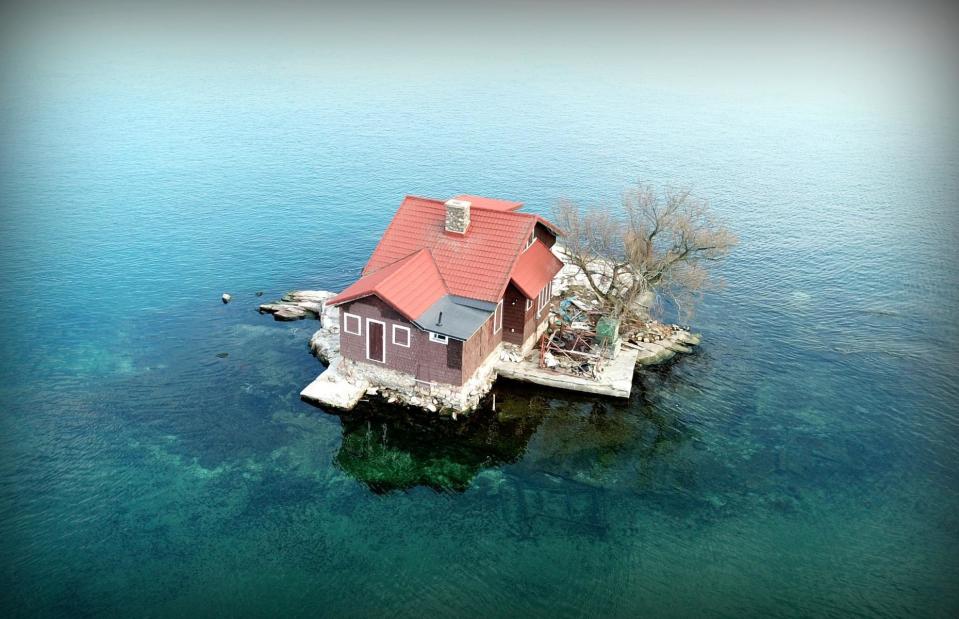
BeatoAerialPhotography / Shutterstock
If you're yearning to quit the rat race and hunker down far away from civilisation, we've found some beautiful homes in the middle of nowhere to inspire you to take the leap.
From wilderness homes high in the mountains to isolated retreats on far-flung coastal strips, read on to take a peek inside these ultra-remote homes around the world...
Mountainside cabin, Quebec, Canada
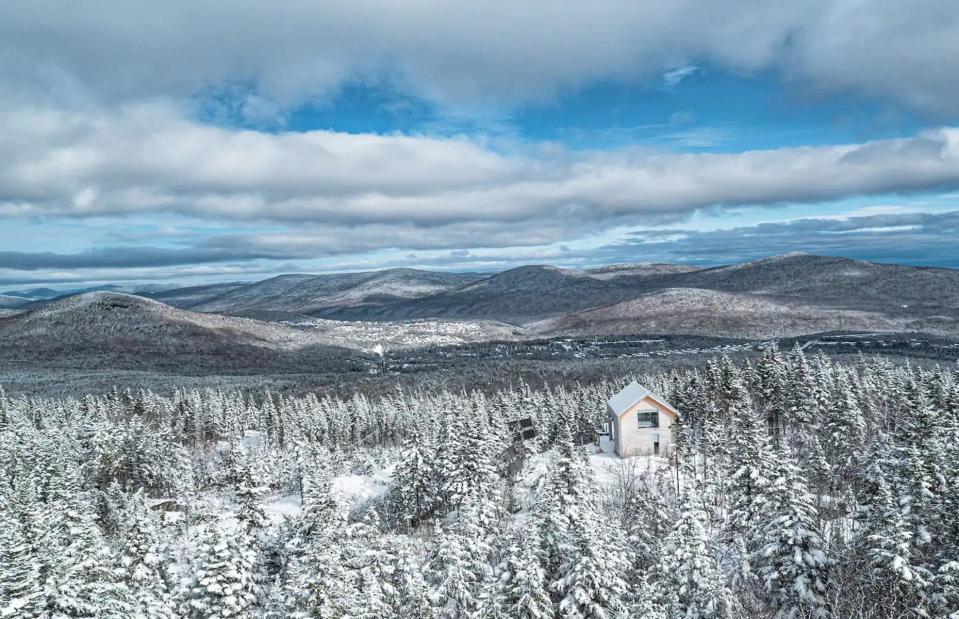
Laury Jane / Airbnb
Lac-Beauport is a small town in the Capitale-Nationale region of Quebec, Canada. On the shores of Lake Beauport and surrounded by mountains and ski slopes, the town has an estimated population of 8,200 people, spread out across almost 25 square miles of pristine land.
Not a place for the faint-hearted, the region experiences extreme weather, with temperatures dropping as low as -16°C in winter, which is 3.2°F. It's in this beautiful, remote region that this quaint mountain cabin can be found.
Mountainside cabin, Quebec, Canada
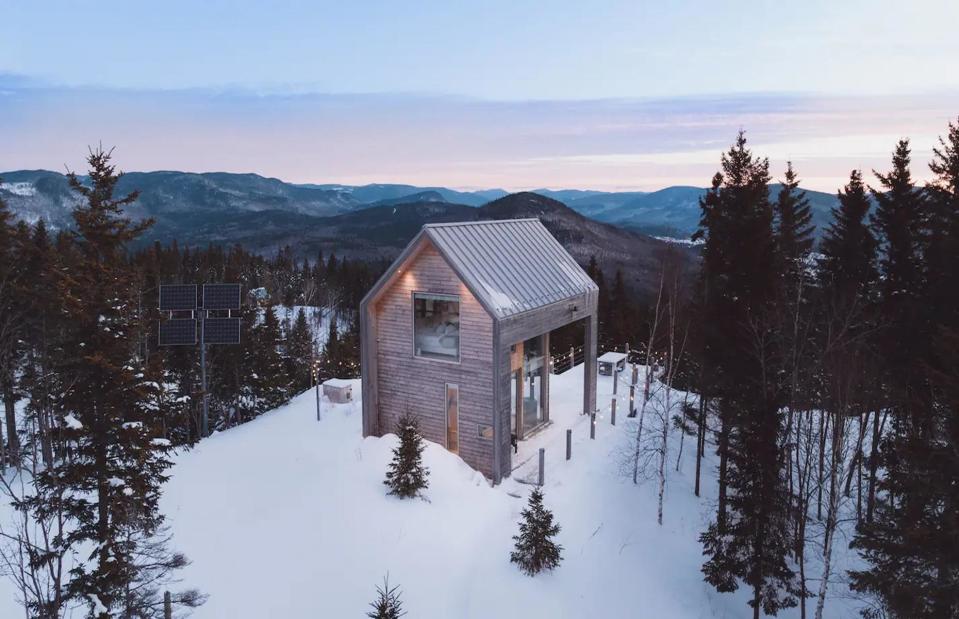
Laury Jane / Airbnb
The cabin is named Le Lagöm, a Swedish word meaning "just the right amount". Situated on a stunning elevated plot overlooking the Saint Laurent River, the property is shrouded by towering trees and runs entirely off solar power, making it as sustainable as it is remote.
It rests just off a gravel forest path and an all-wheel drive vehicle is required to access it. The owners have begun offering it as a place for guests to stay and offer a shuttle service for those not brave enough to venture on the path alone.
Mountainside cabin, Quebec, Canada
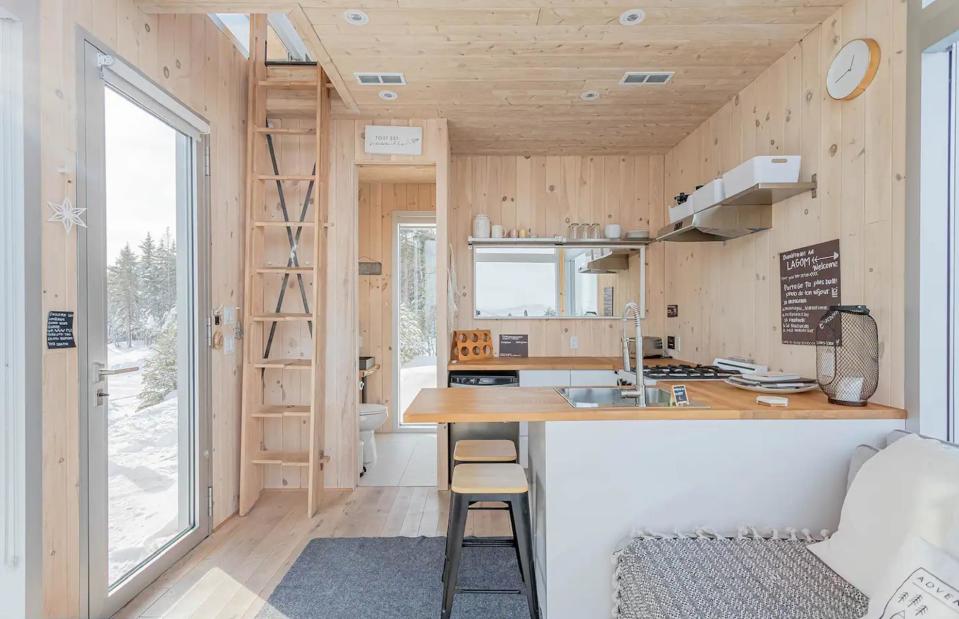
Laury Jane / Airbnb
Designed to immerse any occupant in nature, the contemporary cabin offers entire walls of glass, allowing for uninterrupted views as far as the horizon. The interior covers just 377 square feet and benefits from a lounge, a compact kitchen, one bedroom (located on a small mezzanine floor) and one bathroom.
There's also an outdoor deck, complete with a living area, hammock and yoga mats. In winter, you can simply curl up around the log-burning stove and take in the view.
Mountainside cabin, Quebec, Canada
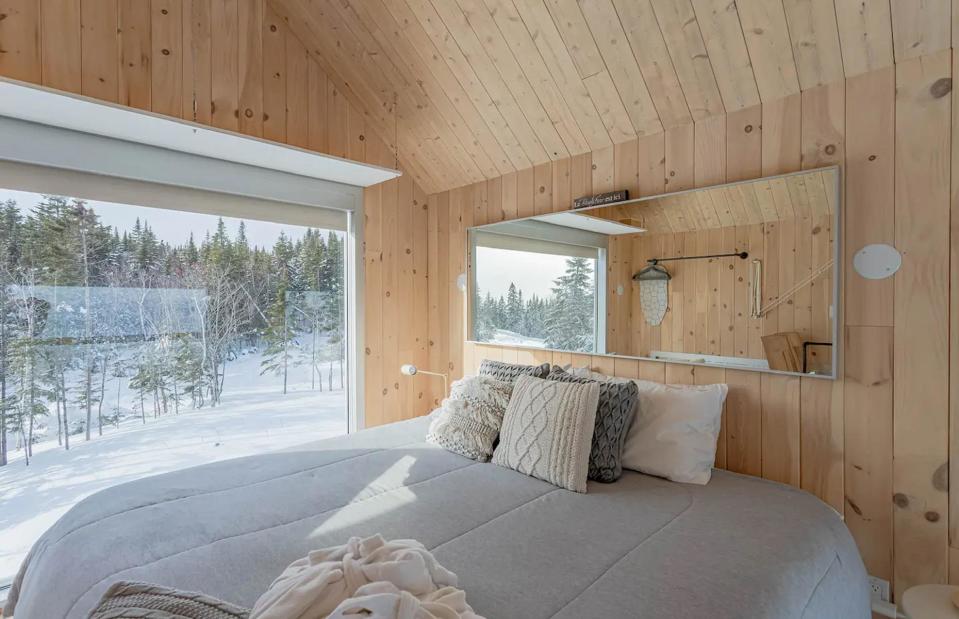
Laury Jane / Airbnb
The home's soft interior palette melts into the background, especially during winter when snow blankets the ground.
Plus there's plenty to do, including snowmobiling, mountain biking, hiking and snowshoeing on the area's various trails and passes. What could be better than pure immersion in nature?
The Glass Cabin, California, USA
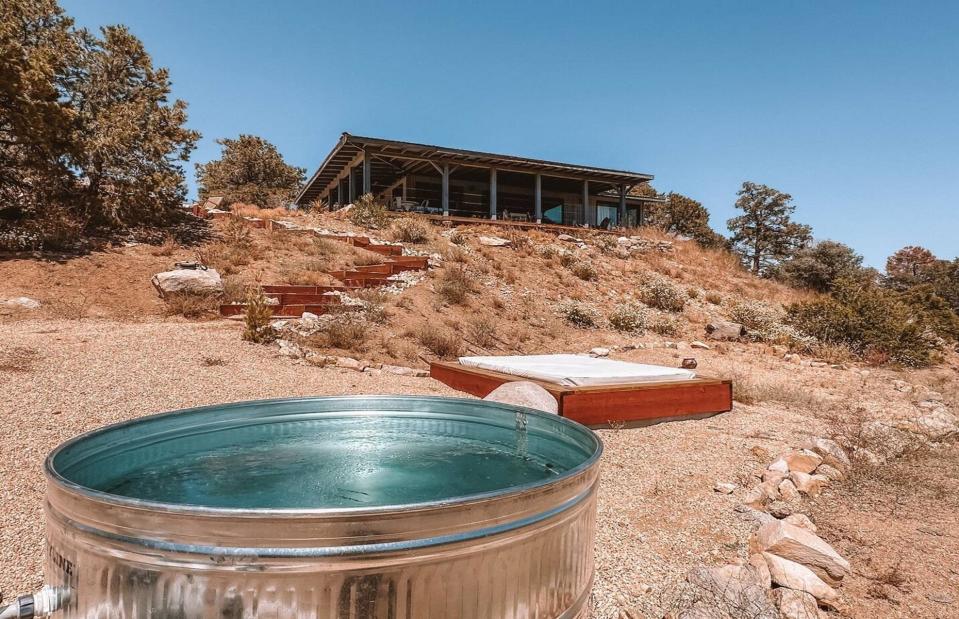
Ryan And Andrew / Airbnb
Enclosed by soaring mountain peaks and endless sand, Pioneertown lies in the Morongo Basin region of California's High Desert and has a rather fascinating history. The town was created in 1946 as a “living breathing movie set". Positioned on 32,000 acres of desert land, Pioneertown was designed as a functioning 1880s-themed town and it served as a filming location for various Wild West movies, including The Range Rider and Cody of the Pony Express.
With the development of high-end movie studios, the location town soon became obsolete. Today, it retains its Old West charm and is home to less than 500 residents. This unique hideaway, in the heart of Burns Canyon (near Joshua Tree National Park), is just one of the properties you can find in this far-flung corner of California.
The Glass Cabin, California, USA
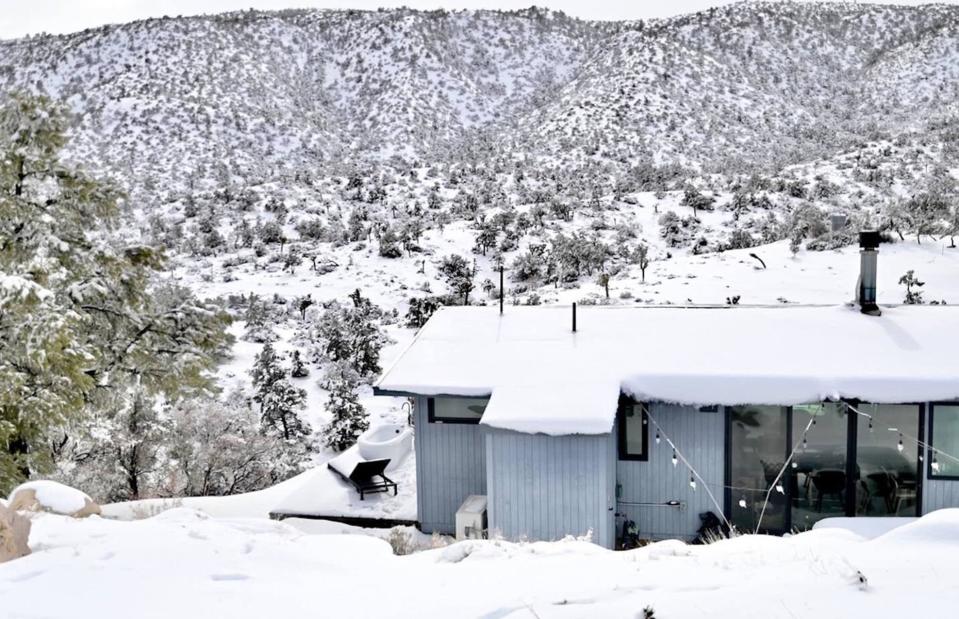
Ryan And Andrew / Airbnb
The remote, off-grid home is known as The Glass Cabin and is available to rent on Airbnb, offering visitors the chance to experience life in the High Desert. While you'd expect it to be hot and humid all year round, Pioneertown does experience cool winters and even sees snowfall.
Yet this property is the perfect place to be in all weathers. It's nestled on five private acres and is an idyllic option for those "seeking serenity and connection with nature".
The Glass Cabin, California, USA
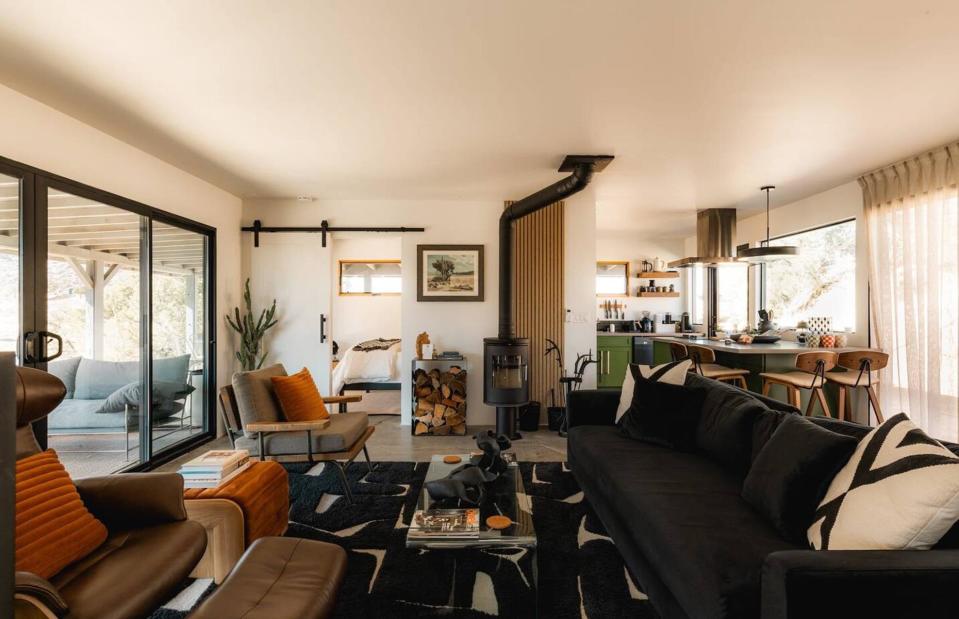
Ryan And Andrew / Airbnb
Accessible only via a four-wheel drive vehicle, the home is truly off-grid, with power supplied by solar panels and a private well providing fresh water all year round.
However, thanks to a recent renovation, the cabin offers all the modern conveniences you’d expect from a luxurious holiday home. Inside, the property is stunning, with an open-plan layout consisting of a lounge, kitchen, dining space, two bedrooms and two bathrooms.
The Glass Cabin, California, USA
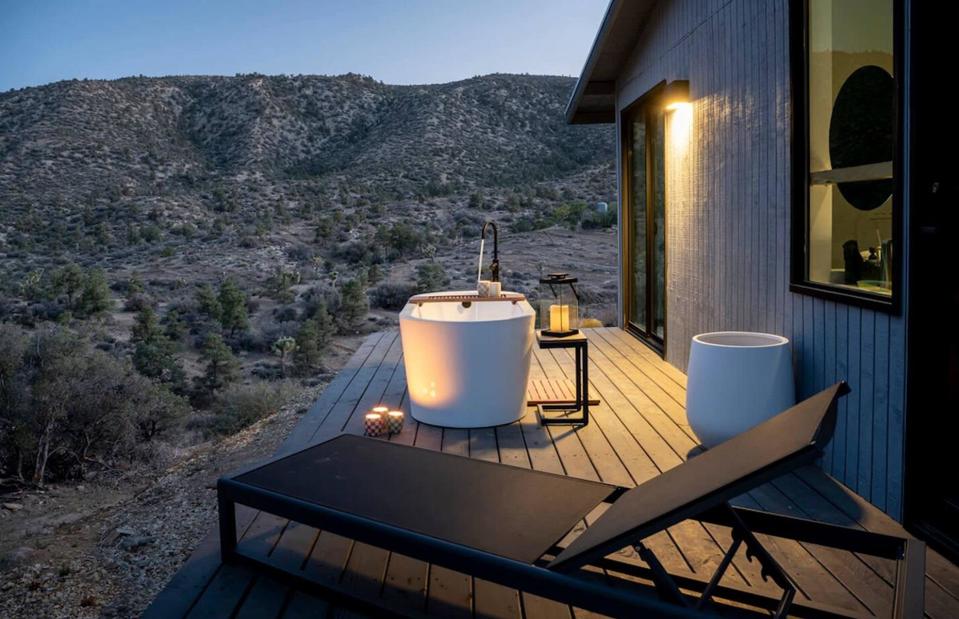
Ryan And Andrew / Airbnb
That isn’t all, either. Outside, you’ll find a 270-degree wrap-around porch with a hot tub, looking out over the tranquil surrounding landscape.
There’s also a 'Cowboy Tub Soaking Pool' available during the summer months, a fire pit, an outdoor BBQ and dining area plus a stargazing deck. Guests can spend their days exploring the amazing natural environment around them.
Off-grid coastal residence, Tasmania, Australia
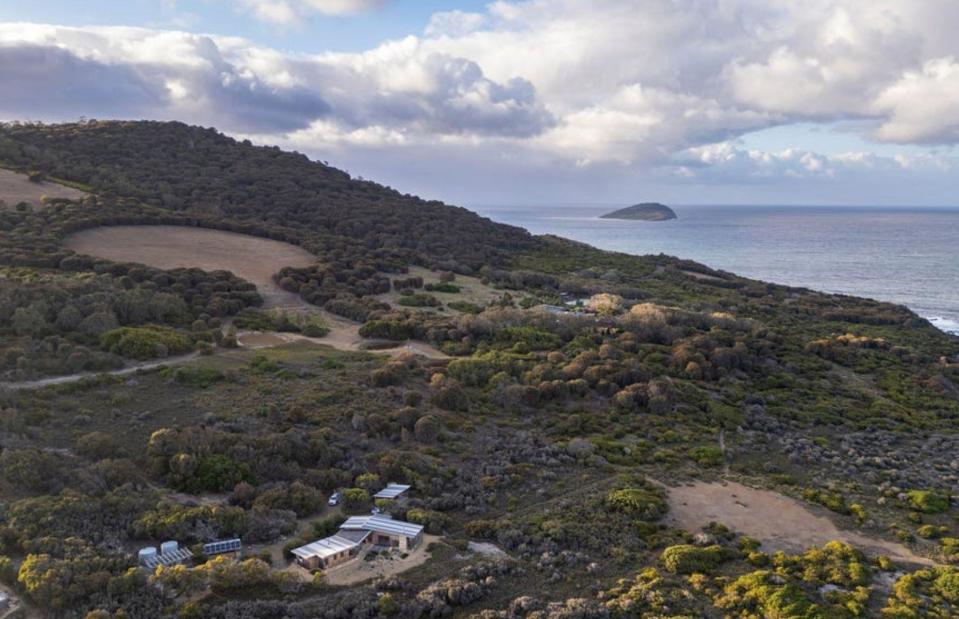
Harrison Agents - Hobart
Described as offering 'rugged and remote landscapes on the edge of the world', Tasmania is an Australian island, located 311 miles south of Melbourne. The same size as Ireland, Tasmania only has an estimated 541,071 residents, while Ireland is thought to have more than five million.
Only accessible by plane or boat, the island attracts those seeking stunning scenery, peace and total seclusion. Located above Roaring Beach Bay on the island's south-east coast, this enchanting, off-grid estate highlights the type of property you can buy there.
Off-grid coastal residence, Tasmania, Australia
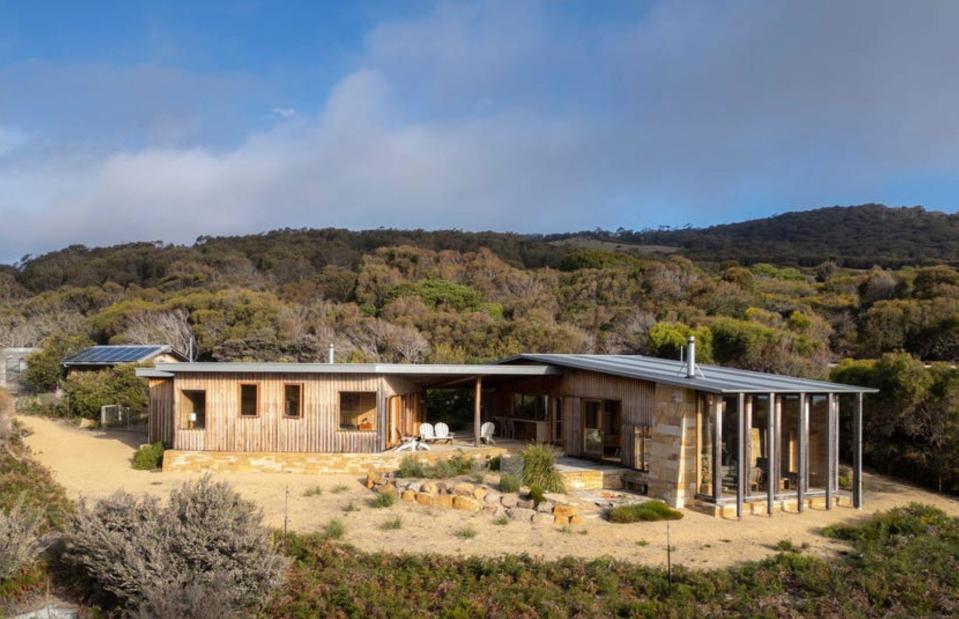
Harrison Agents - Hobart
Designed by the team at Plain Architecture, the residence has been crafted as the ultimate off-grid experience. Harrison Agents called the house the 'epitome of elegant simplicity' and it isn't hard to see why.
Positioned on over ten acres of bushland, the home celebrates natural materials and draws on the colours of Tasmania's coastline, both inside and out. For starters, the exterior is clad in Macrocarpa Pine and Buckland Sandstone.
Off-grid coastal residence, Tasmania, Australia
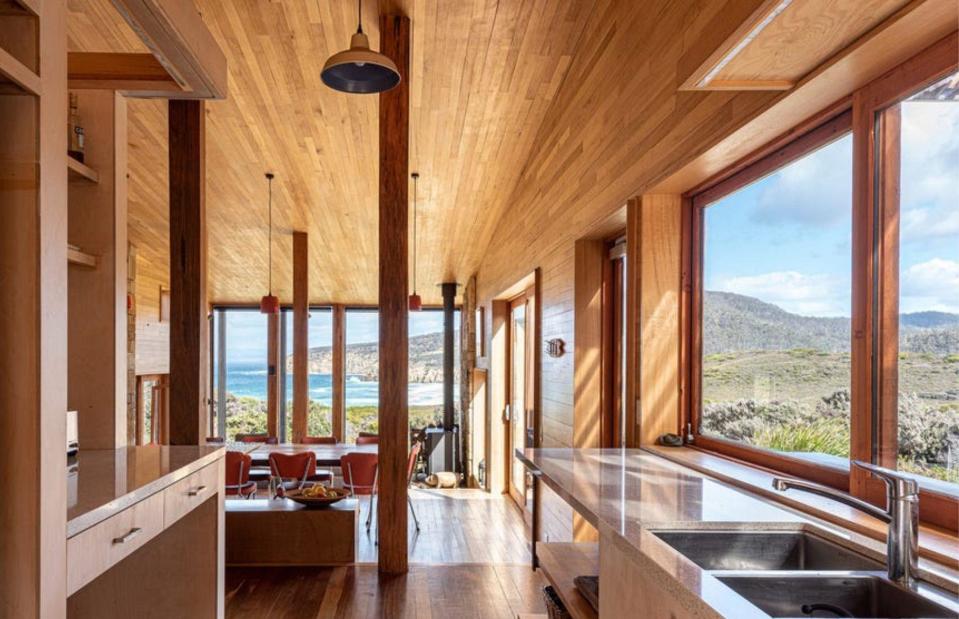
Harrison Agents - Hobart
Inside, the 1,722-square-foot property benefits from high ceilings, recycled Jarrah flooring, exposed timber features and floor-to-ceiling windows that capture remarkable ocean views.
Unique and highly sustainable, the remote house also boasts reclaimed materials, including Blue Gum pillars that were originally used as underground mine supports and salvaged from the town of Allens Rivulet. As for rooms, there’s a kitchen, dining room and lounge, as well as four bedrooms and two bathrooms.
Off-grid coastal residence, Tasmania, Australia
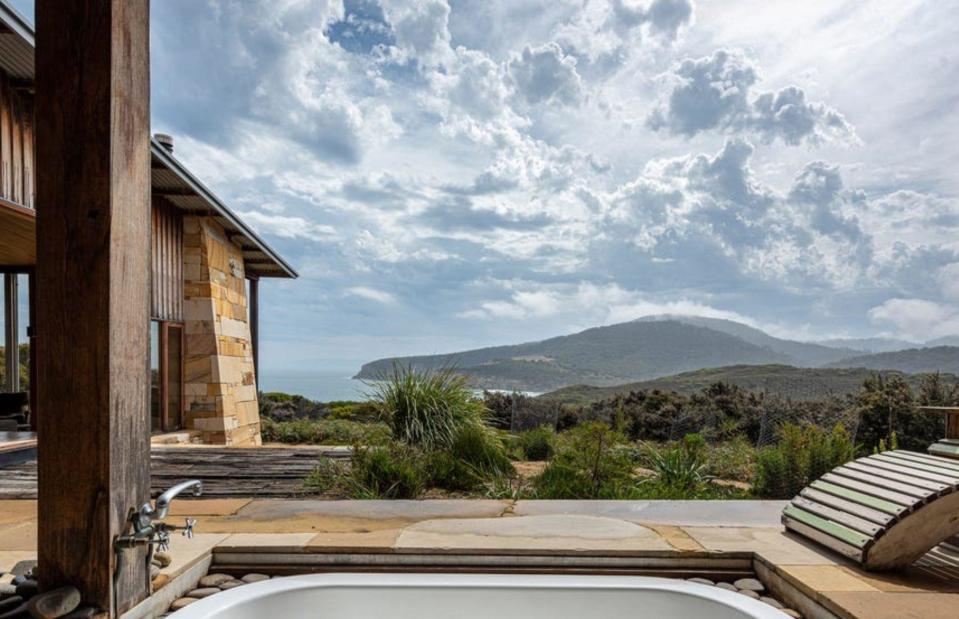
Harrison Agents - Hobart
There are also seemingly endless patios and decks, where the lucky occupant can soak up spectacular scenery. One even comes with a sunken bathtub and a sauna. Completely off-grid, the property features 2.85kWh solar generation, 8kWh Lithium-ion battery storage, a 10,000L rainwater collection tank, on-site septic and passive solar heating.
If you're interested in living in this remote and remarkable locale, then the home is currently open to expressions of interest.
Dunbeg House, Inverness-shire, UK
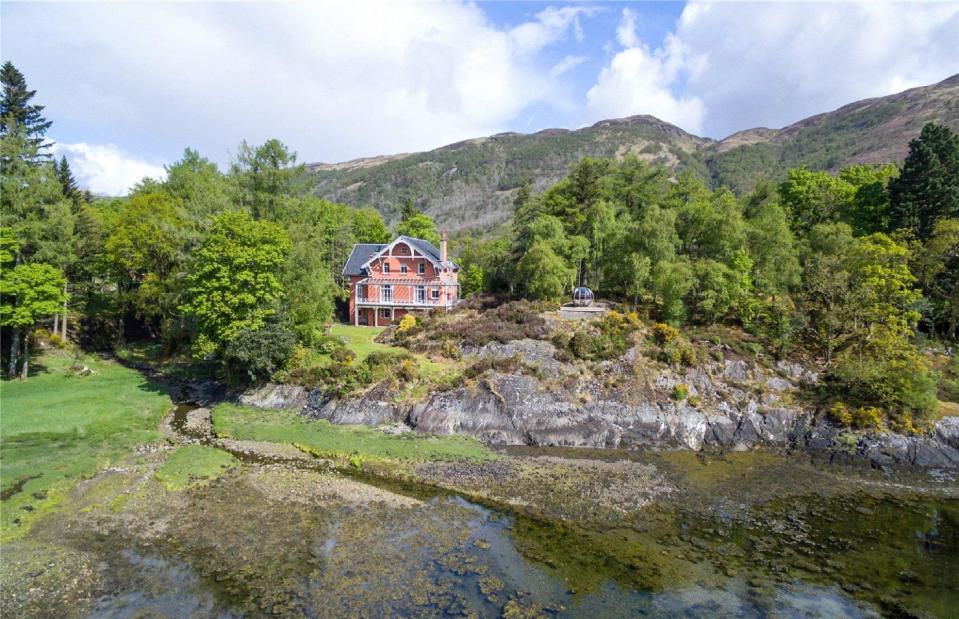
Bidwells LLP
Occupying a romantic and remote plot on the shores of Bishop’s Bay in Inverness-shire, Scotland, this remote luxury home has history, beauty and solitude in abundance.
The sprawling, near 4.45-acre estate comes equipped with two buildings, Dunbeg House and two-bedroom Bishop’s Bay Cottage, as well as magnificent views all the way to Loch Leven.
Dunbeg House, Inverness-shire, UK

Bidwells LLP
The main residence, Dunbeg House, is a beautiful early 1900s Arts and Crafts villa with a study, movie theatre, piano room and wine cellar. Key design details include original limestone tiling, stained-glass windows, delicate millwork and log-burning fireplaces.
French doors in the drawing room lead out to the home’s balcony, which provides spectacular views. There’s also a standalone studio apartment complete with a games room.
Dunbeg House, Inverness-shire, UK
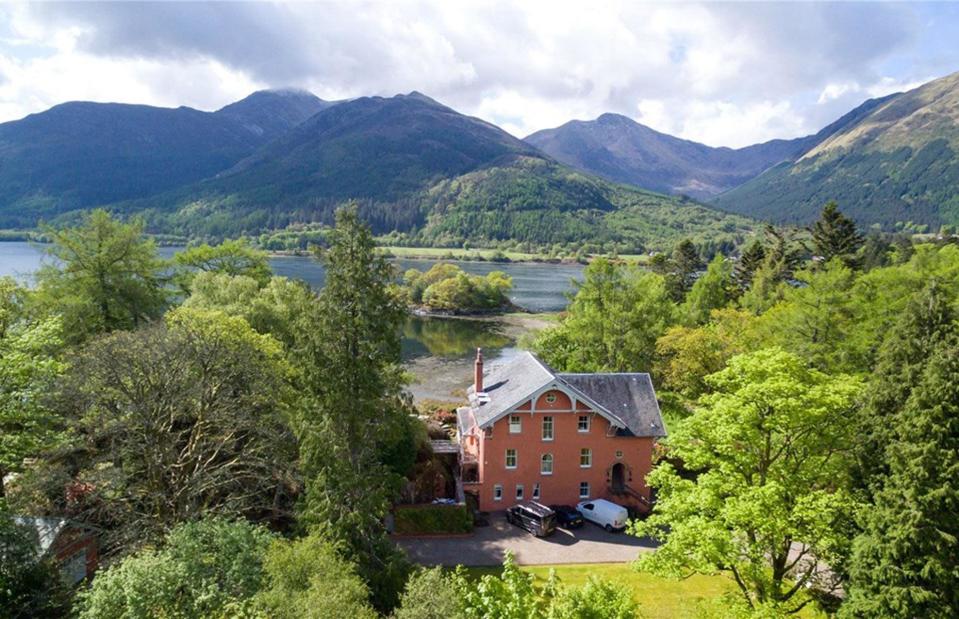
Bidwells LLP
Dunbeg House has five beautifully appointed bedrooms, while the master suite features an opulent ensuite bathroom with underfloor heating, a dressing room and a dazzling outlook across the water. Now, that's what we call luxury living in the wilderness!
Dunbeg House, Inverness-shire, UK
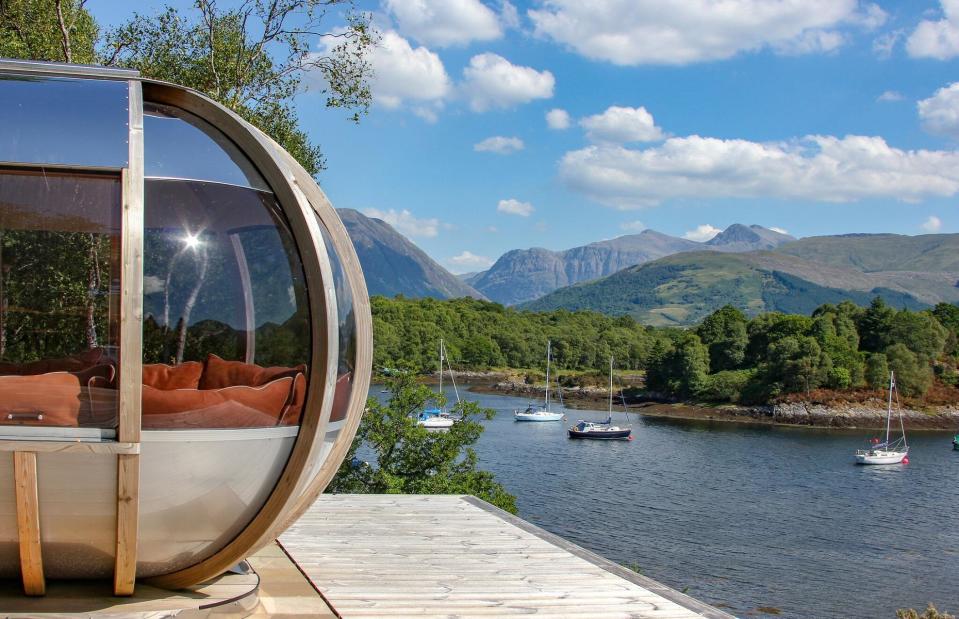
Bidwells LLP
Outside, you'll find a jetty and pier, so you can make a speedy escape whenever the need arises.
The idyllic waterfront garden even comes complete with a glass pod, where you can enjoy romantic evening meals and sunset drinks, all while soaking up the surrounding scenery. Bliss!
Just Room Enough Island, New York, USA
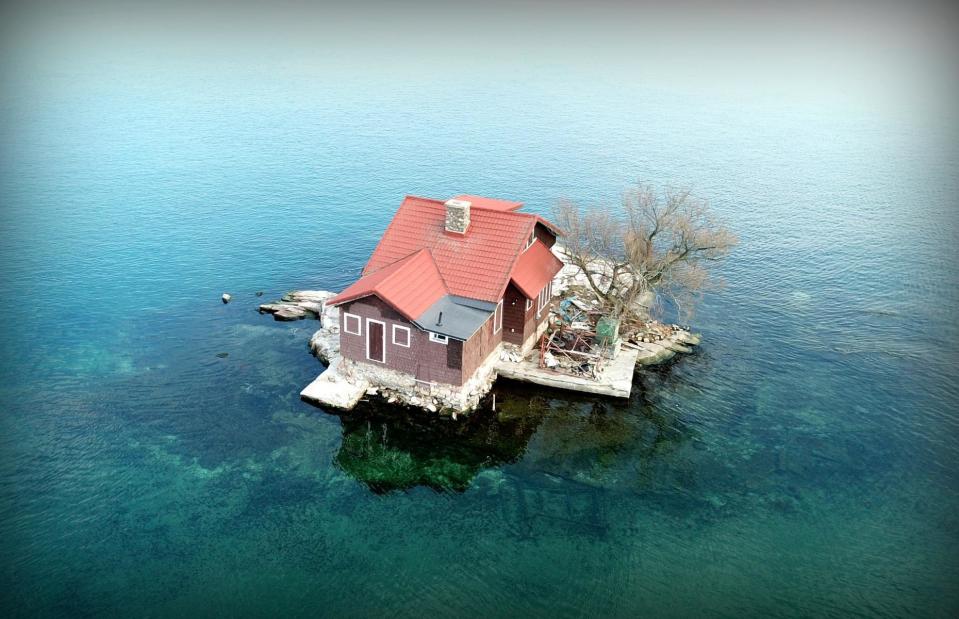
BeatoAerialPhotography / Shutterstock
Located in New York’s Thousand Island chain in Alexandria Bay, the aptly named Just Room Enough Island is known for being the smallest inhabited island in the world.
The adorable land mass is just 3,300 square feet, roughly the size of a tennis court, and is entirely occupied by a small home, a tree, and some scrub brush.
Just Room Enough Island, New York, USA
![<p>Omegatron / Wikimedia Commons [CC BY-SA 3.0 DEED]</p>](https://s.yimg.com/ny/api/res/1.2/BVqViC5oFAdKAmXcCZ1UTQ--/YXBwaWQ9aGlnaGxhbmRlcjt3PTk2MDtoPTYxOQ--/https://media.zenfs.com/en/loveproperty_uk_165/3b3fbbc29c519676120495874cd5a7b1)
Omegatron / Wikimedia Commons [CC BY-SA 3.0 DEED]
Also known as Hub Island, the spot is one of 1,864 similarly tiny islands that make up the famous Alexandria Bay chain, many of which are so small that they can only accommodate a single tree or some greenery.
Just Room Enough is one of very few of these islands to actually be inhabited.
Just Room Enough Island, New York, USA
![<p>Sergey Ashmarin / Wikimedia Commons [CC BY-SA 3.0 DEED]</p>](https://s.yimg.com/ny/api/res/1.2/nMUfbmCP8gAjytv4nLgsYg--/YXBwaWQ9aGlnaGxhbmRlcjt3PTk2MDtoPTYxOQ--/https://media.zenfs.com/en/loveproperty_uk_165/272048bdc240f8ba56e536ecc2eb29c9)
Sergey Ashmarin / Wikimedia Commons [CC BY-SA 3.0 DEED]
In the 1950s, the island was purchased by the Sizeland family, who renamed it ‘Just Room Enough Island,’ planted a tree, and built a summer cottage.
This took up nearly every available square foot of space, with just enough room left over for a few wrought iron benches and a small beach.
Just Room Enough Island, New York, USA
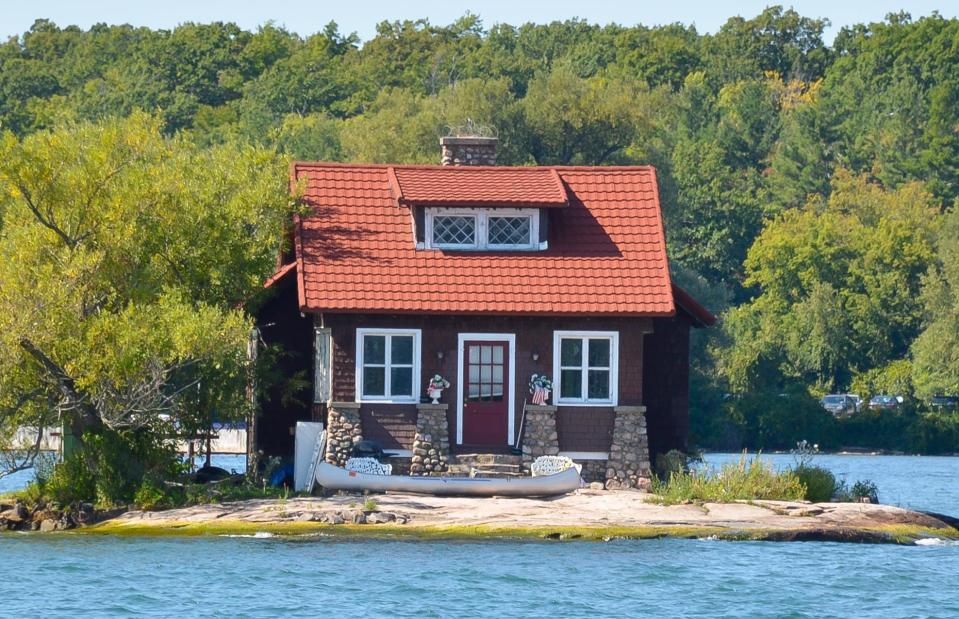
BakerJarvis / Shutterstock
The Sizelands had hoped the island would make for a remote vacation home. Today however, while the home is still privately owned, it has become a major tourist attraction, with visitors flocking to the site in boats, hoping to get a closer look at one of the world's loneliest homes.
Yr Helfa, Wales, UK
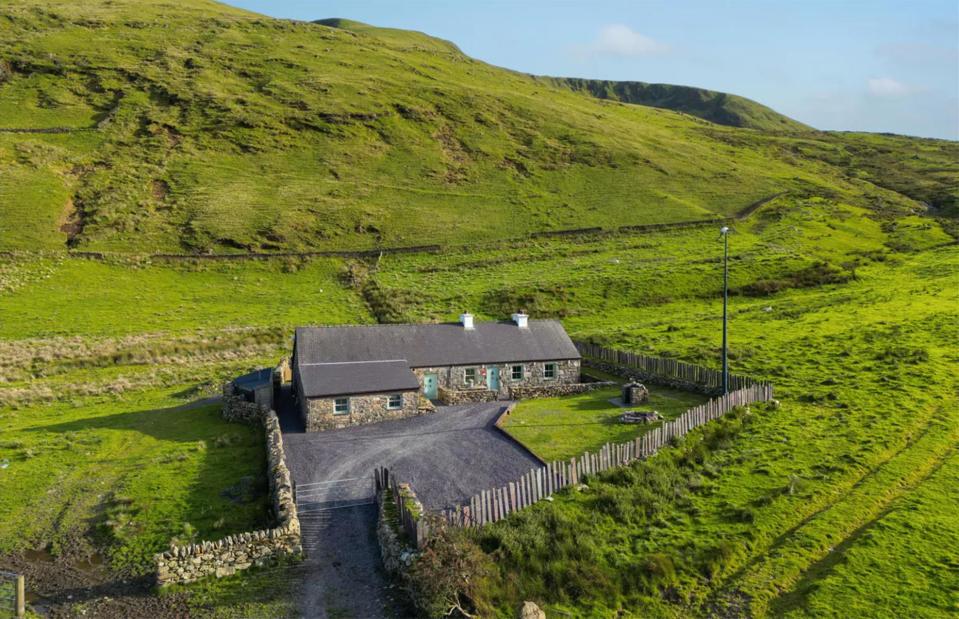
Joshua Feilden / Crashpadlodges.com
Believed to have been constructed in the 1700s, this traditional Welsh long house boasts stunning 360-degree views of complete isolation.
Yr Helfa, as the house is known, is situated in the foothills of Snowdon, and boasts true off the grid status with high-tech, self-sufficient energy sources.
Yr Helfa, Wales, UK
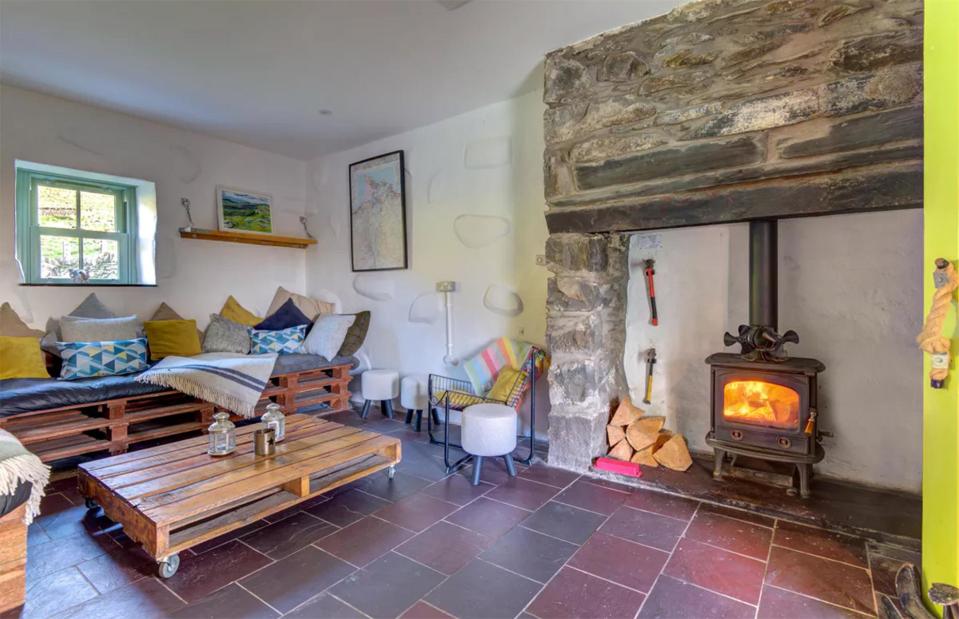
Joshua Feilden / Crashpadlodges.com
A perfect blend of old and new, the home is constructed of ancient local stone, with a roof made from slate mined from nearby quarries. Inside, original features include exposed stonework, traditional fireplaces, and Welsh stone slab flooring.
Yr Helfa, Wales, UK

Joshua Feilden / Crashpadlodges.com
However, its most recent owners have fully renovated the property, installing state-of-the-art technology to help the home remain off-grid, yet energy efficient.
These include solar and water solar PV, a biomass boiler, a gravity feed water with filtration and sterilisation treatment centre, biofueled underfloor heating, a smart-controlled, energy-efficient back-up generator, and even its own weather station.
Yr Helfa, Wales, UK
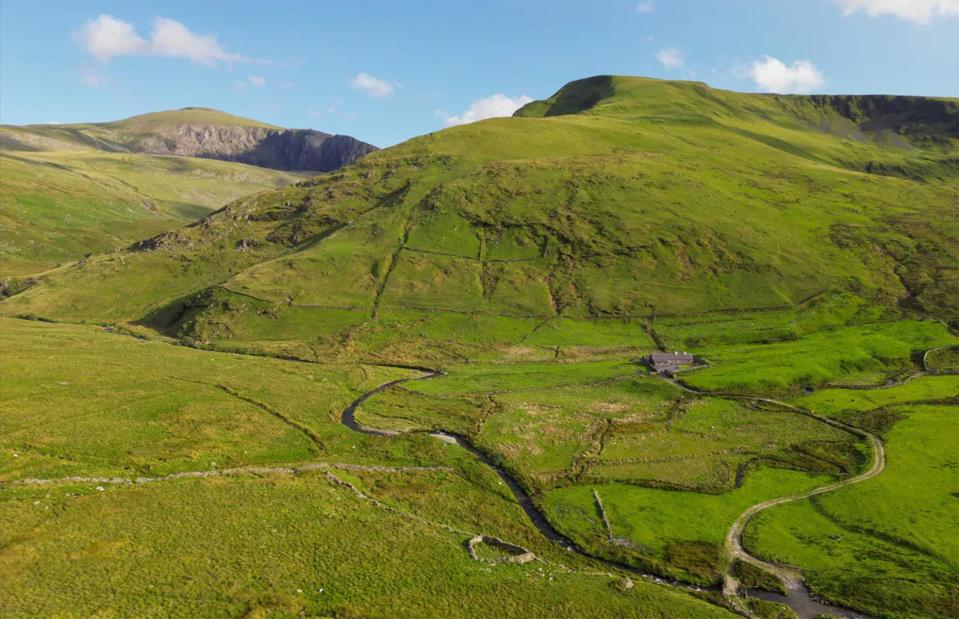
Joshua Feilden / Crashpadlodges.com
In short, the home is the perfect blend of old-world charm and modern technology, allowing you to retreat into the remote Welsh countryside without having to sacrifice the comforts of 21st century living.
Sit outside in the patio area, switch on the stone-built barbeque, and relax in the tranquillity of peaceful rolling hills as far as the eye can see.
Skiddaw House, Lake District, UK
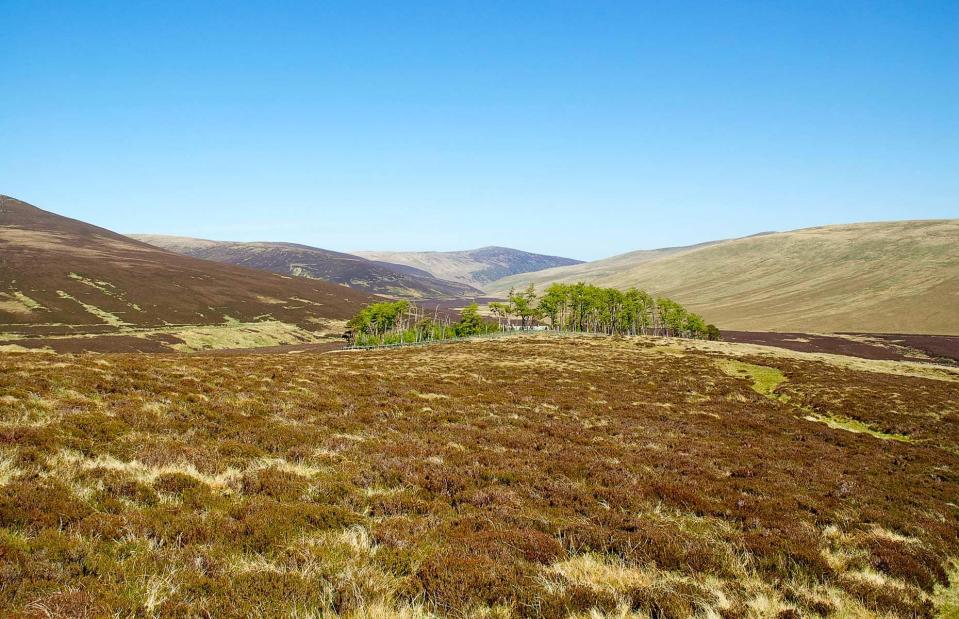
Ian Simpson / Alamy Stock Photo
This dreamy Late District house (you can just spot it in the trees) has been billed as the “loneliest house in England,” and it’s not hard to see why. Three and a half miles away from the nearest road, Skiddaw House was built in 1829 by the Earl of Egremont of Cockermouth Castle.
Over the centuries it has served as a residential home, shooting cabin, a gamekeeper's lodge, and a rambler's bothy.
Skiddaw House, Lake District, UK
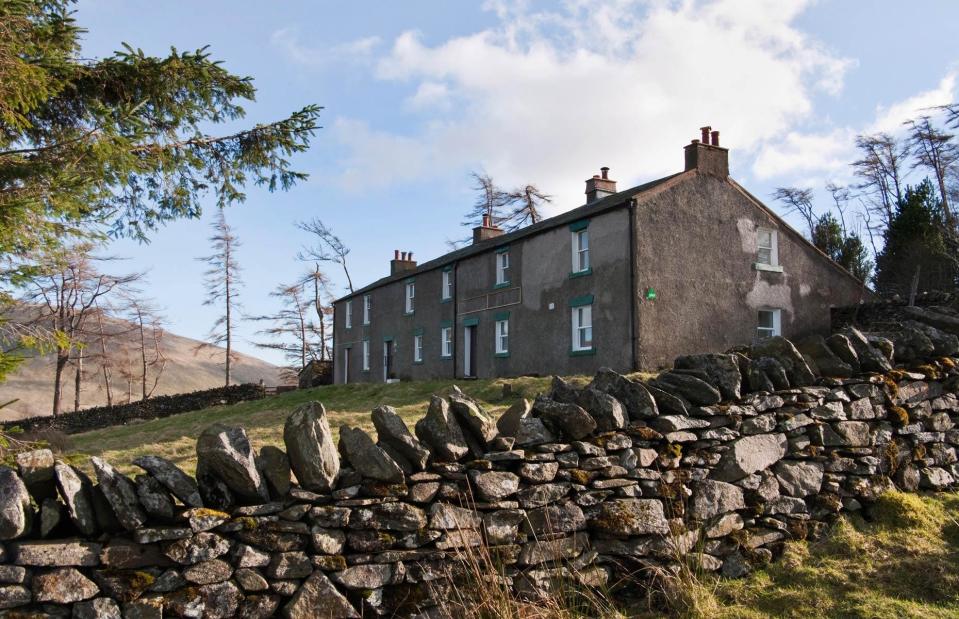
Julian Cartwright / Alamy Stock Photo
The home is situated in the middle of Skiddaw Forest, a good 1,500 feet above sea level, and is only accessible by foot, bicycle or 4x4. The home is not wired for electricity, TV reception, or internet, but solar panels provide the necessary electric power.
Water can be sourced from a local spring and a wood-burning stove offers a sufficient heat source in the winter, combined with sheep fleece insulation. It's a charming place to step away from the world.
Skiddaw House, Lake District, UK
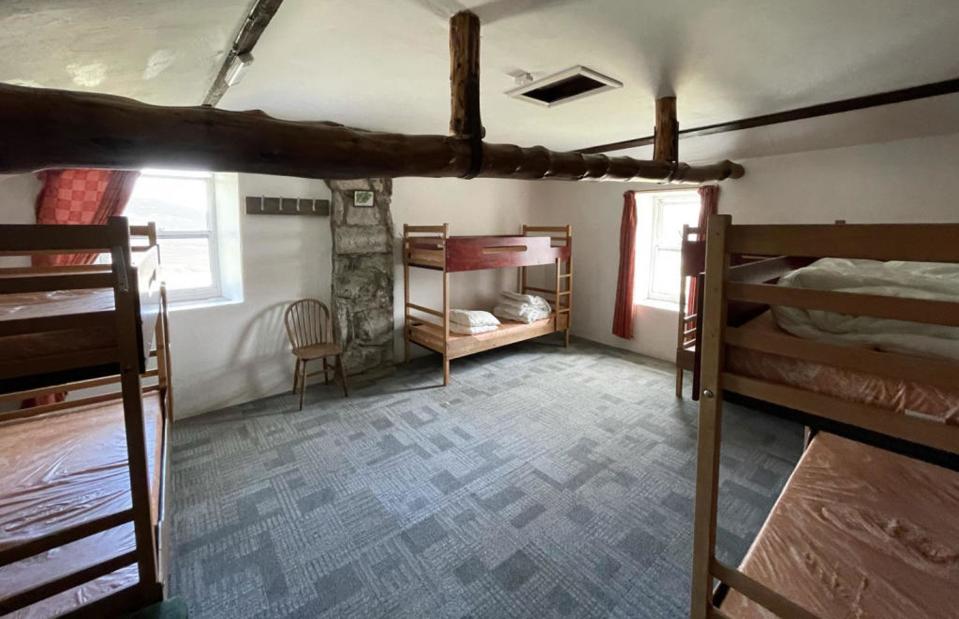
Mitchells Land & Property
Given its extremely isolated location, this is hardly surprising. British writer Hugh Walpole once described the house as “one of the loneliest dwelling places in all the British Isles”.
In fact, he was so taken with its remoteness that he used it as the setting for a murder in his 1932 novel The Fortress. Buttressed by 3,000 acres of windswept, treeless moorland known as Back o’Skidda, the home certainly lends itself to images of eerie mystery.
Skiddaw House, Lake District, UK
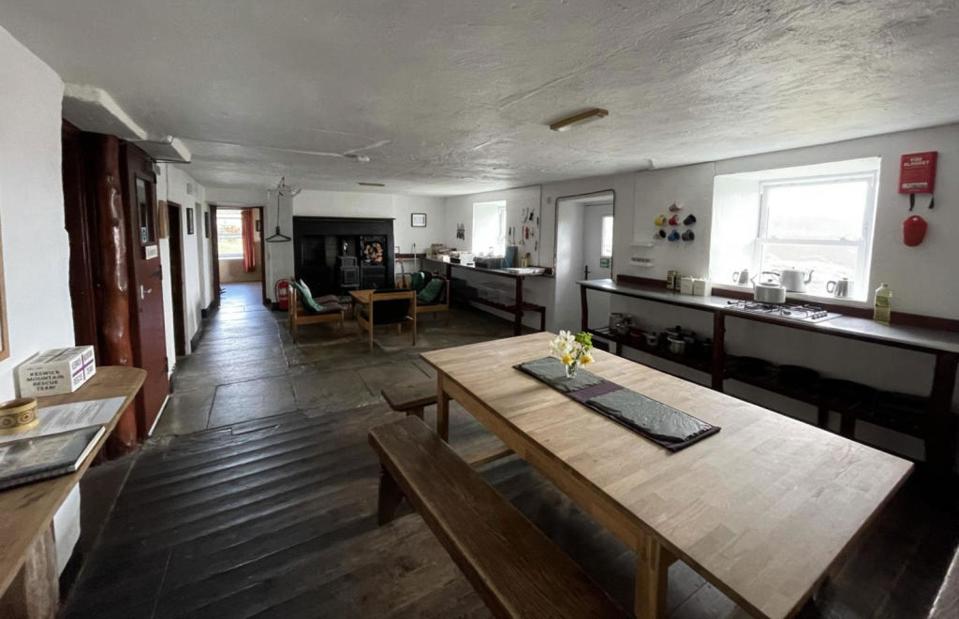
Mitchells Land & Property
The home is comprised of six bedrooms, six bathrooms, four reception rooms, and a spacious kitchen and dining area. The property has also been on and off the market for the last several years but has yet to secure a buyer.
For now, the home has been serving as a rustic off-grid hostel, where travellers can gather and share stories of their adventures before sharing one of the communal rooms available.
Wordie House, Winter Island, Antarctica
![<p>LBM1948 / Wikimedia Commons [CC BY-SA 4.0]</p>](https://s.yimg.com/ny/api/res/1.2/i95gkL429ag_Br2pUQjQ5w--/YXBwaWQ9aGlnaGxhbmRlcjt3PTk2MDtoPTYxOQ--/https://media.zenfs.com/en/loveproperty_uk_165/5955a31f56a67e6b3337adb72d1468dd)
LBM1948 / Wikimedia Commons [CC BY-SA 4.0]
Once an early British scientific base in Antarctica, Winter Island was established in 1947 with the construction of a primary research building called Wordie House.
It is named after Sir James Wordie, a geologist and chief scientist on Shackleton’s Endurance Expedition, an historic attempt to make the first overland crossing of the Antarctic continent between 1914 and 1917.
Wordie House, Winter Island, Antarctica
![<p>LBM1948 / Wikimedia Commons [CC BY-SA 4.0]</p>](https://s.yimg.com/ny/api/res/1.2/Cwsq7CvbRIZpNYw9amRrJw--/YXBwaWQ9aGlnaGxhbmRlcjt3PTk2MDtoPTYxOQ--/https://media.zenfs.com/en/loveproperty_uk_165/a2d324dbf003081ed34335552e2dc6cf)
LBM1948 / Wikimedia Commons [CC BY-SA 4.0]
The hidden home consisted of a kitchen, living room, generator shed, office, ‘dog room,’ and bathroom, and was constructed using building materials salvaged from a whaling station on the nearby Deception Island.
It was originally designed to accommodate up to four or five scientists at a time.
Wordie House, Winter Island, Antarctica
![<p>Andreas Kambanis / Wikimedia Commons [CC BY-SA 2.0]</p>](https://s.yimg.com/ny/api/res/1.2/0WJm5o05nRXqcfy15N3e3Q--/YXBwaWQ9aGlnaGxhbmRlcjt3PTk2MDtoPTYxOQ--/https://media.zenfs.com/en/loveproperty_uk_165/45babfe3156d02c30313a5fa953ca510)
Andreas Kambanis / Wikimedia Commons [CC BY-SA 2.0]
The hut was only operative as a scientific base until 1954, at which point the program was relocated to a new building on a nearby island.
The house remains a time capsule of its previous incarnation as a research station, packed with canned goods and coffee, tools, records, books, radio antenna, paint cans, books, typewriters, pots and pans, dishes and radio equipment.
Wordie House, Winter Island, Antarctica
![<p>Lewnwdc77 / Wikimedia Commons [CC BY-SA 3.0]</p>](https://s.yimg.com/ny/api/res/1.2/UwO5UO.IF3Wsb7NYiH.bbg--/YXBwaWQ9aGlnaGxhbmRlcjt3PTk2MDtoPTYxOQ--/https://media.zenfs.com/en/loveproperty_uk_165/eaacca60e1f37d9c7baa39fd21017b91)
Lewnwdc77 / Wikimedia Commons [CC BY-SA 3.0]
Today, the site is a popular tourist attraction, owned and operated by the United Kingdom Antarctic Heritage Trust who had it restored and designated an Historic Site or Monument.
While no one lives in Wordie House today, we can only imagine what it must have felt like to endure a chilly winter on the isolated Arctic tundra back when the site was still an operational research facility!
Refuge des Grands Mulets, Mont Blanc, France

Hemis / Alamy Stock Photo
Perched atop a rocky edge among the peaks of Mont Blanc in the French Alps, Refuge des Grands Mulets, sometimes called the Grands Mulets Hut is owned by a French club that promotes mountain sports and maintains places for people climbing or hiking, just like this one.
Sitting at an altitude of over 10,000 feet (3,051m), the steel-coated building is a meeting spot and place of rest for skiers and hikers exploring the slopes of the French Alps, but it has a wealth of history behind it.
Refuge des Grands Mulets, Mont Blanc, France
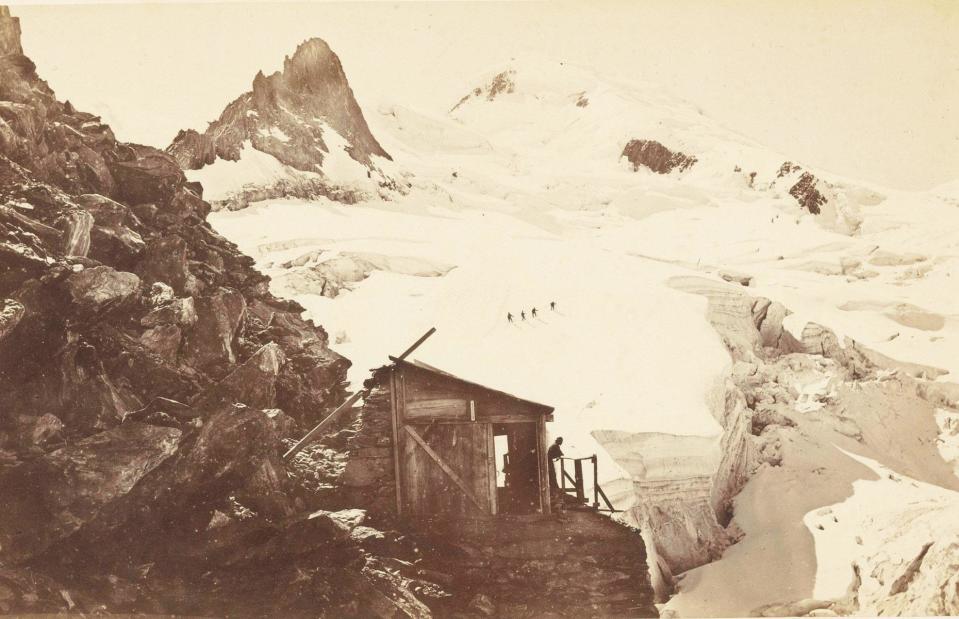
piemags/rmn / Alamy Stock Photo
The first Grands Mulets hut was allegedly built in 1853, then replaced in 1896. The current refuge standing was built in 1960 and inaugurated by Maurice Herzog, a famous French mountaineer.
This image dated between 1853 and 1875, shows how small and basic the original hut was. Not much in the way of ammenities! These days, it's a very different story...
Refuge des Grands Mulets, Mont Blanc, France
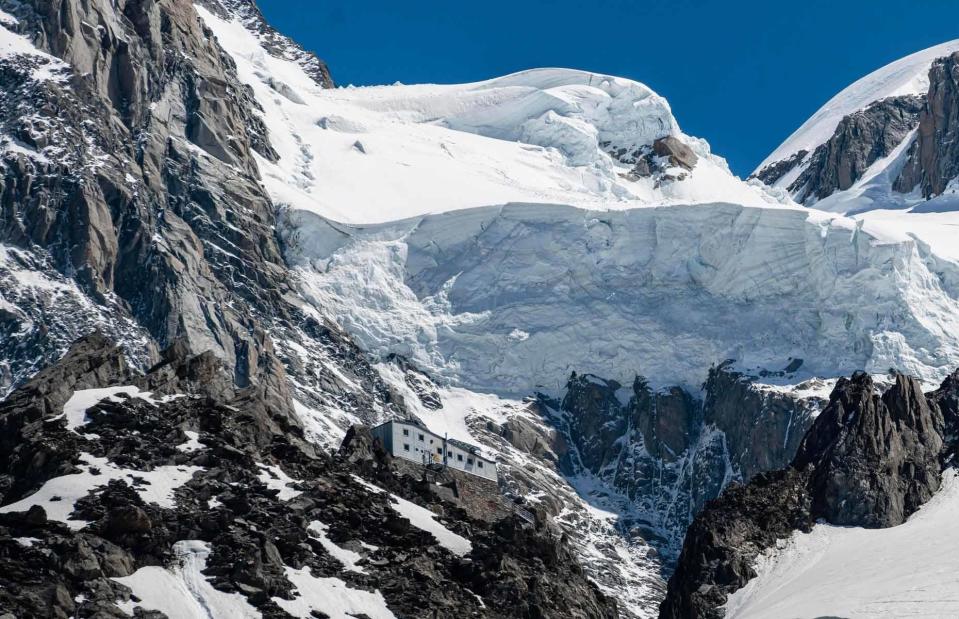
imageBROKER.com GmbH & Co. KG / Alamy Stock Photo
Offering cosy beds and a well-stocked library for moments of tranquillity, the Refuge des Grands Mulets can now sleep up to 68. Open from late March to late July each year, there are four dormitories available to rest your head in.
Refuge des Grands Mulets, Mont Blanc, France
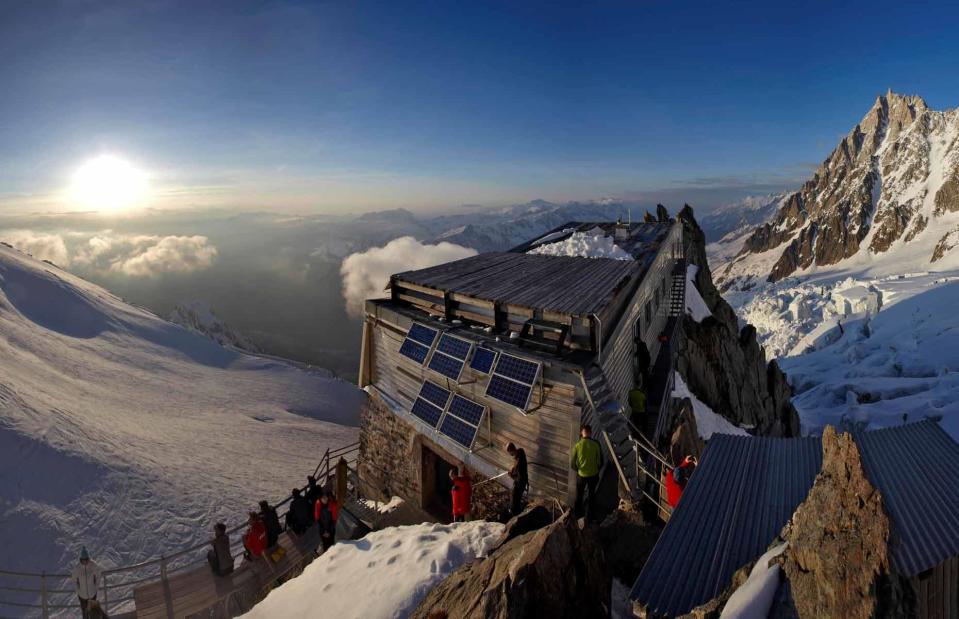
Hemis / Alamy Stock Photo
People choose to stay at this unusually located dwelling as not only is it a direct route for skiing the north face of Mont Blanc, but also a more unusual choice for mountaineering, far from the crowds and in the footsteps of Balmat and Paccard, the very first climbers of this impressive peak in 1786.
The lighthouse cabin, Lyngstuva, Norway

Pavel Kasak / Alamy Stock Photo
You might not consider living within the Arctic Circle, but this house was once home to the lighthousekeeper of Lyngstuva, Norway. The tiny hut was built in 1922, originally to store the oil needed to light the lamp, but became the keeper's shelter from the bitter cold.
The lighthouse cabin, Lyngstuva, Norway

Pavel Kasak / Alamy Stock Photo
Although it's not known exactly when the lighthouse keeper moved on, the hut had fallen into serious disrepair by the time two German explorers found it in 1986 and decided it should be restored... well, that's one story.
Another tale is that the home was repaired in 1993 by two Berliners, who fancied painting it a lovely shade of red. Whaetever is true, today you can hike to the hut and lighthouse and stay over as it sleeps two to three people.
The lighthouse cabin, Lyngstuva, Norway
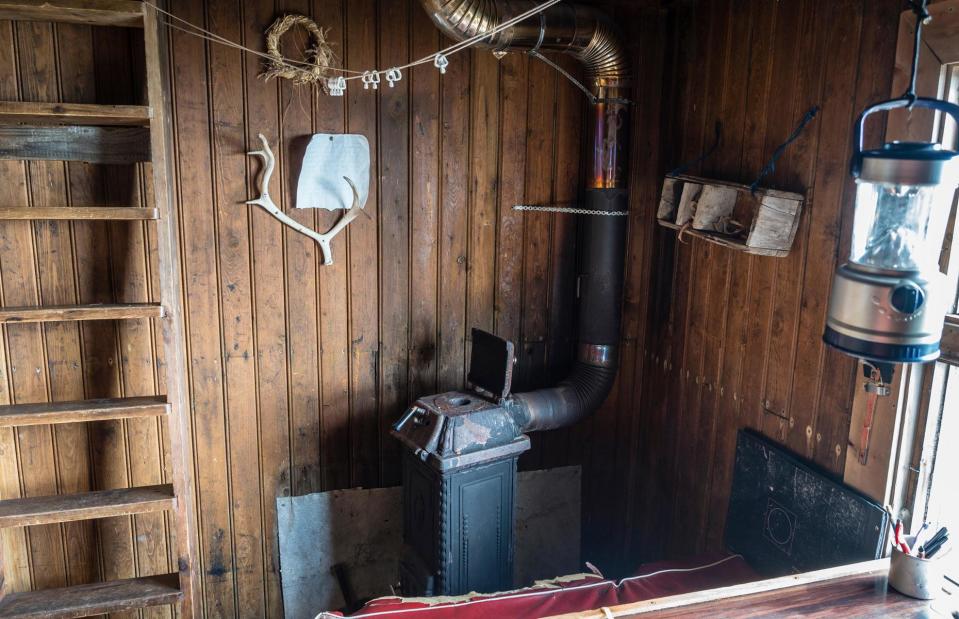
Andreas Werth / Alamy Stock Photo
Guests that pass through tend to leave provisions for other travellers, so the cabin is usually well-stocked, by all accounts. Here's a photo of the interior, which is kitted out with a stove for heating and cooking, a table and chairs, and various useful items such as paraffin lamps, pens, books and a clothesline.
The ladder leads up to a loft area for sleeping that must be wonderfully toasty when the stove is blazing, but visitors have to bring their own bedding.
The lighthouse cabin, Lyngstuva, Norway
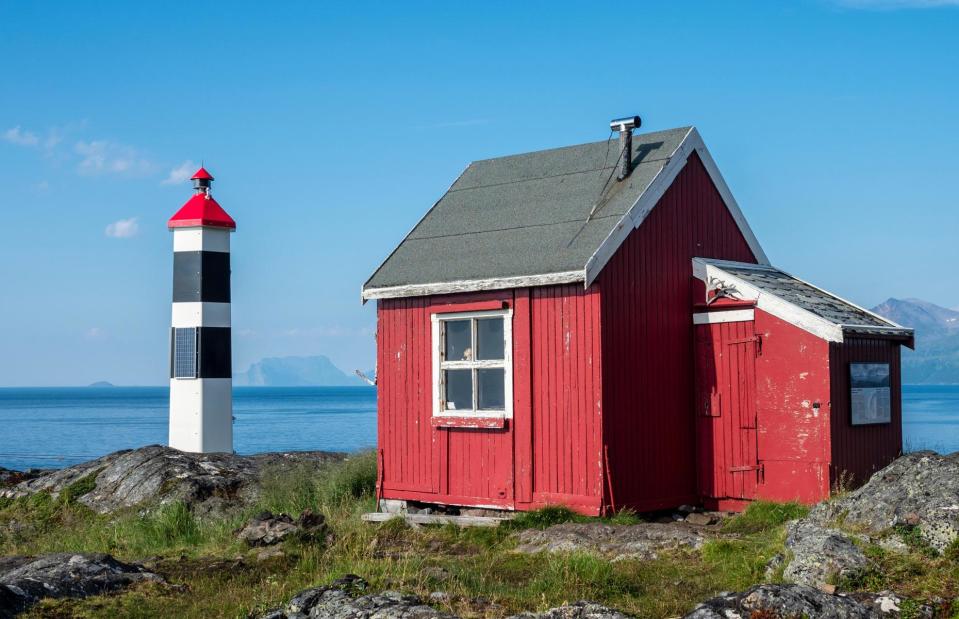
Andreas Werth / Alamy Stock Photo
The German restorers are said to have imported all the necessary materials for the renovation project from their home country, no doubt at much expense. But instead of hiring out the property at an exorbitant price, they offered it completely free of charge to passing tourists. In fact, you can stay rent-free in the home for as long as you like.
According to one traveller who has visited, some people have remained for long periods and written “deep philosophical stories in the guestbook”.
Now take inspiration from more unusual real estate around the world


